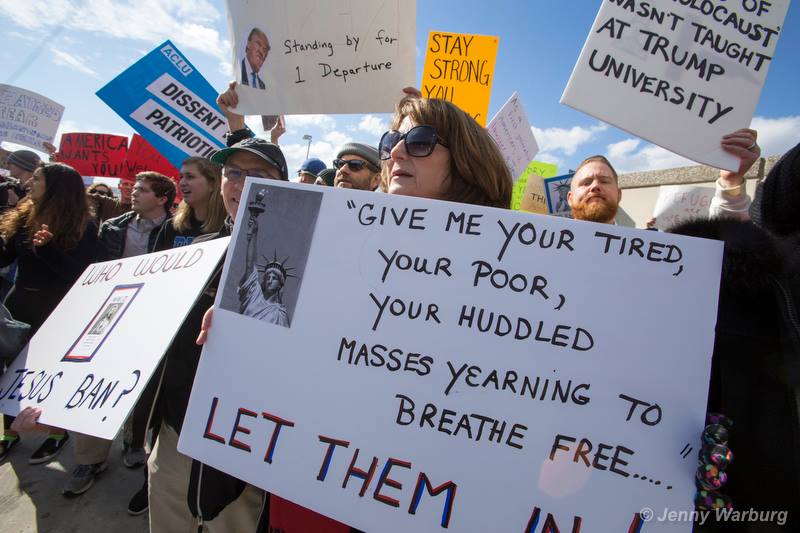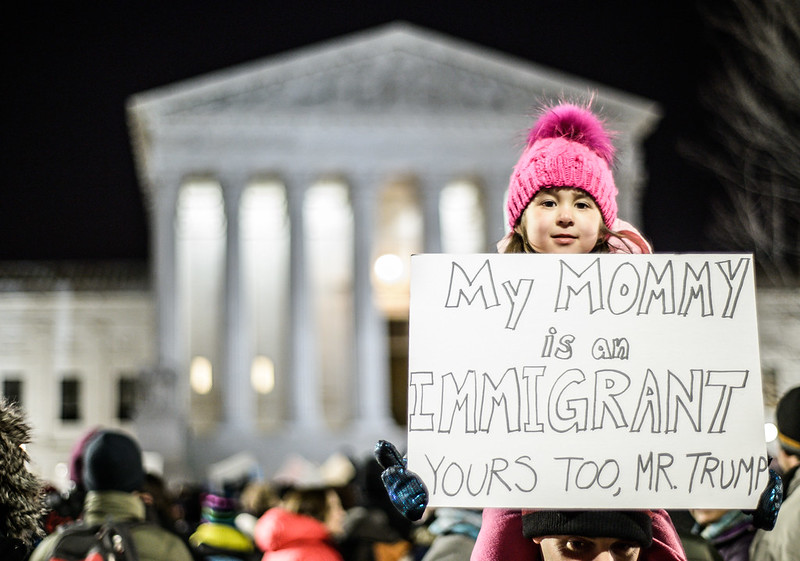While the Biden administration is making tremendous strides in immigration areas, its uneven application across different aspects of the U.S. immigration system is sobering.

Just shy of the 100 days mark, the Biden administration made a terrible blunder, issuing an emergency presidential determination on refugee admissions for fiscal year 2021 that maintained the cap set by Donald Trump—15,000 people, rather than the 62,500 figure he had promised several months ago.
The announcement shocked stakeholders and the general public alike, and the Biden administration quickly walked back their position—sort of— promising a new number will be issued later in the year. But the mistake, whether it originated with bad policy or poor communication, exposes a long-standing problem in the execution of our immigration system: It is often far more politically convenient to keep a bad policy going than it is to make lasting change.
Biden’s Previous Pledges to Restore Refugee Resettlement Program
Before taking up the broader point, let’s dig into what happened on the refugee resettlement front.
The last four years have witnessed the destruction of most of the infrastructure needed to carry out a robust refugee admissions program. In those infamous first days in office in 2017, President Trump not only banned Muslims from admission to the United States, but stopped all refugee admissions for a time and slashed the annual presidential determination for fiscal year 2017 from the 110,000 set by President Obama to 50,000.
Year after year, the administration reduced the number of admissions—apparently with the goal of admitting zero refugees—but ultimately in his final authorization, President Trump settled on 15,000 and imposed restrictions on refugee admissions based on religion and nationality.

In contrast, candidate Biden campaigned passionately and eloquently against the Muslim ban, the bars on refugees, and the loss of American leadership on humanitarian protection. He promised to authorize 125,000 refugee admissions by fiscal year 2022 and to restore the refugee resettlement program.
President Biden started to make good on those promises almost immediately, issuing on Day 16 a detailed executive order instructing government officials to rebuild and reimagine refugee resettlement. He promised a down payment on the 125,000 admissions, later notifying Congress that he would propose lifting refugee admissions from 15,000 to 62,500 for the remainder of the fiscal year and remove the discriminatory restrictions that prevented many refugees from countries like Syria and Somalia from entering the United States.
Although the 62,500 figure was first announced in early February, the promised presidential determination failed to materialize. Each day that passed meant individuals who had already been approved for refugee status—but were barred from entry because of religion or nationality under President Trump’s order—still could not realize the promise of a new life in the U.S.
Refugee resettlement agencies became increasingly concerned, noting hundreds of flights had been canceled because otherwise eligible refugees would not be allowed to enter the U.S. John Oliver issued a scathing indictment of the Biden administration’s delay on Last Week Tonight. Members of Congress and other prominent community and advocacy groups begged the administration to act.
Nor was the administration transparent about the reasons for delay. The national refugee resettlement agencies, whose relationship with the government is deemed a private-public partnership, were shocked and outraged by the new order. While pleased that the restrictions had been lifted, they sharply criticized the administration’s decision to stick with the Trump number, as did countless other organizations.
Decision on Refugee Cap Made Without Stakeholders or Congress
So far, the justification for both the delay and the announcement turns on the fact that the administration inherited a gutted system which was far more broken than first supposed. Pressure on the Office of Refugee Resettlement (ORR), which oversees both the custody of unaccompanied children and resettlement programs in the U.S. has also been cited as a contributing factor. But something doesn’t sit right about these arguments.
By now, it’s a given that the Trump administration did its utmost to dismantle humanitarian protection of refugees and asylees. Rebuilding those programs is going to take a lot of effort and resources and political acumen.
Refugee processing, in particular, has been delayed not only by direct limits on who and how many can enter the country, but also on onerous background checks and other systemic issues, as well as the practical realities imposed by the pandemic. As for ORR, the rise in unaccompanied minors in custody is straining its resources but resettlement services and custody of unaccompanied minors are separate programs within the organization—even with added pressures, one responsibility does not negate the other.
In light of these concerns, whether or not 62,500 admissions were practical or realistic was probably highly debated within the confines of the National Security Council. But ultimately, the administration opted to advise Congress that it would increase admissions accordingly.

Even if there were second thoughts, acting without consulting stakeholders or Congress was a mistake, and, scaling all the way back to Trump’s number was a bigger mistake. The refugee admission number is far more than a tally of how many refugees will come to the U.S. in a given year. It is the outside limit on admissions of refugees, assessed and calculated not only against American resources, but worldwide need.
Currently, 26.3 million refugees are hoping to be resettled. And future needs for refugee resettlement will only grow—consider, for instance, the great risks to women posed by the withdrawal of U.S. troops from Afghanistan if the Taliban regains control. Raising the cap sends a signal that the U.S. recognizes the depth of need and encourages other countries to do the same—something President Biden acknowledged back on Day 16.
To refuse to increase the number now, but instead release new targets incrementally, will make it more difficult for refugees, resettlement agencies and communities to plan and prepare for refugee arrivals. The journey is already long and unpredictable; backing away from a significant increase in admissions is yet another destabilizing blow to the refugee network.
DHS Continues to Expel Single Adults and Families Under Guise of COVID
There’s also a disturbing parallel between this decision and the continued reliance on another Trump era legacy—the expulsion of asylum seekers under the authority of Title 42 of the U.S. Code. While the Biden administration has exempted unaccompanied children from expulsion, it continues to remove thousands of single adults and families without any due process or opportunity to raise an asylum claim under the guise of an order suspending entry of undocumented persons because of COVID-19.
In both cases, it appears expedient to rely on a Trump rule or policy in order to limit the administration’s own accountability. It’s a risk to set a higher admission number and then not meet it. It’s a risk to reject an illegal policy that artificially suppresses the number of people attempting to enter the country and seek asylum. Far easier, it seems, to hang on to the bad policies that provide some breathing room than run the risk of failing.
But expediency and convenience lead to inconsistent policy. At the same time the Biden administration has apparently opted for a less politically taxing route on refugee admissions and Title 42 expulsions, it is making tremendous strides in other immigration areas. The administration is ripping up the Trump playbook, rapidly replacing policies and drafting regulations that will improve immigration benefits and change some detention and enforcement procedures. It is exploring asylum reform and has reversed some of the worst Trump programs that harmed asylum seekers. There really is momentum—but its uneven application across different aspects of our immigration system is sobering.
Take Action
The fact that the inconsistencies are harming vulnerable refugees and asylum-seekers should give us all pause. And then, it should turn to action.
Up next:





